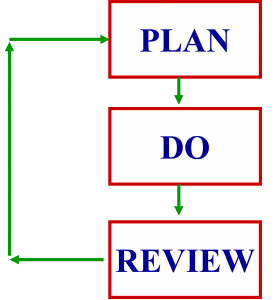. . . . or that of the 20 other invitees! Does this sound and feel familiar? If not, I would like to know where you work because they have cracked the code that seems to have escaped MOST companies / organizations. Most of our clients are looking for ways to cut out waste. They go about it by streamlining processes, eliminating work, running LEAN initiatives, etc. all in an effort to move from tactical to strategic and it is a noble effort. My argument here is NOT that these efforts won’t bear fruit – I am sure they will. But, there might be an easier, more immediate payback by looking at the amount of time they and their staffs spend in meetings.
By the way, I am not against meetings. I actually prefer human interaction and live (even if it is virtual) communication / collaboration over text and email (reading thousands of emails can also be a huge time sucker). The problem lies in the fact that most meetings are a complete waste of time. People are late, the right people don’t show up, there is no clear objective or agenda and I can go on and on. This is such an important issue that “Effective Meetings” is a half- day session in The Mpower Group’s Supply Chain University and one of the most highly rated – go figure. I must admit that when we first offered it as a training session I was embarrassed, since I think most of the concepts are common sense. But frankly, in business as in life, common sense does not always prevail.
I chuckled when I read an article from Forbes.com and Kotter International (yes, John Kotter, the Change Management guru) “I Want That Hour Back: The Meeting Invitee’s Bill of Rights”. The article points out that if a company can eliminate meetings that “don’t matter” and employees can focus on those that do, then days, weeks and even months can be reclaimed to get real work done. While my clients are looking for much more difficult ways to improve efficiency, making meetings more effective can be a painless fix. By the way, the BEST meeting is the one that does not take place at ALL unless needed.
I have a personal story here that I like to share with my trainees and it is a true story. About 10 years ago I was on a professional executive board of my business school. Every member was very senior and had an MBA from this institution. Every year we had an annual retreat which lasted about eight hours on a Saturday. It was the responsibility of the board chair to set the agenda and run the meeting. Here is how this played out:
- I was handed the agenda as I arrived which had over 25 items on it
- The only timing in the agenda was the start time and the end time
- There was no stated objective
- There was no indication of which items were info share, discussion or decision required
- We never got off the first agenda item
- The discussion was disjointed and went off into tangents that had nothing to do with any of the agenda items
- There were no decisions made
- There were no action items at the end of the meeting
- This meeting was facilitated (hardly) by an MBA with 20 MBAs in attendance
That was 168 hours of executive time that I assume some charitable organization would have loved to take advantage of. It was a complete waste of everyone’s time. I resigned from the board soon thereafter.
Here is a simple process that we use and ties nicely into the article’s Bill of Rights:
PLAN
1. Clearly articulated objectives sent in advance
2. A focused invitee list
3. A well-considered agenda
4. A thoughtfully designed experience
5. Reasonable preparation sent with sufficient time to complete
Please note that ½ of the activities all take place BEFORE the meeting. This is critical – don’t hold a meeting unless you have the time to PLAN.
DO
6. Start on time and end early
7. Ensure everyone is paying attention in the meeting
8. Key decisions and questions placed up-front
9. Alert facilitation
Strong facilitation is key to a successful meeting. Make sure that you have an energetic and focused facilitator – especially for looong meetings.
REVIEW
10. Thoughtful, brief and timely notes of discussions, decisions and action
Take the time to summarize the results and ensure that the objective was met. Also record the results and get confirmation that all attendees know what the action items are.
If you are the meeting organizer / facilitator then respect the rights of the attendees and follow these simple steps. If you are an attendee – JUST SAY NO unless your rights AND time are respected. Focusing on effective meetings can go a long way to raising your “stock” within your organization so try it.
Tell us what you think – join in the conversation . . . . ..



2 Comments
Pingback: I Wish I had a Dollar for Every. . . . . - News You Can Use
Pingback: Ten New Year’s Resolutions for CPOs in 2016 - News You Can Use